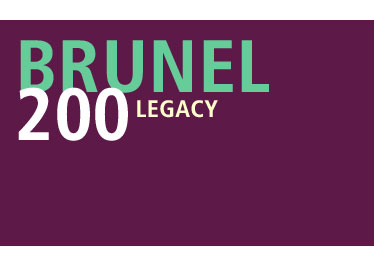|
|





19 year 3 pupils at Cabot Primary, 21 year 8 students
at City Academy
40 participants – April to July 2006
This project helped to address the
question: How can we engage young people from the inner city and in particular
those from ethnic minority backgrounds in learning about Brunel?
First Born
Creatives proposed linking with Cabot Primary and students at City Academy
to engage them in a series of challenges and activities that reflected
Brunel’s creativity and entrepreneurship. To do
this they would meet and work with present day inspirational innovators
who have made their mark in business and design. Jake Siddique, inventor
of a case for the iPod and Tim Paddock inventor of the ‘mountain
board’ acted as mentors to the groups.
Over the course of the project
the pupils investigated technological innovation and the skills and qualities
needed by successful entrepreneurs. Throughout the project they learned
about the process of developing a product from research and planning through
to final marketing. They then developed their own ideas to launch onto
the marketplace. Jake and Tim’s
involvement as mentors was key to the success of the project and made
a big impact on the pupils.
“The pupils still talk about it now and I feel that they have
developed a new approach and understanding of the whole design process.
They were also all extremely proud to have their work recognised.” Kathryn
Fuller, teacher Cabot Primary
The pupils’ work is showcased on www.icandream.co.uk,
a website celebrating the project which also serves as a lasting resource
for other schools to draw upon. The residency connected with one of the
overall aims of Brunel 200 – ‘To encourage the young Brunel’s
of the future’.
For more information about the work of Firstborn Creatives,
visit their website at:
www.firstborn-creatives.co.uk
Firstborn Creatives’ evaluation
Feedback from Kathryn Fuller-Cabot Primary:
“The year 3 class involved in the project thought it was great!
There was a good mix of discussion, workshops and trips. The children
were inspired by the inventor, Jake- showing that an inventor doesn’t
always have to be a scientist! Both Rob and Amy (project leaders) were
very encouraging throughout, and the pupils were all keen to work with
them. The project was broken down into sections from initial design to
filming their advert which visually supported the progression of their
inventions. The pupils still talk about it now and i feel that they have
developed a new approach and understanding of the whole design process.
They were also all extremely proud to have their work recognised. Overall
a great success.”
Vannesa Pinnington – City Academy:
”The group that were chosen to work with
Brunel were a challenging and bright group of students who we thought would appreciate
doing something different. Most of them grasped the idea with great enthusiasm
and worked well with both the Brunel staff and myself and Keith to ensure that
they planned and completed their inventions on time. A few were a little despondent
at the beginning, mainly due to the decision about whose idea to use
but with the help of the Brunel staff, overcame their initial problems
and completed their inventions. The Brunel staff must be commended for
their patience and motivation throughout the project. When we all met
on 19th July, the students really enjoyed the presentations, the visit
to At-Bristol and couldn't wait to collect their certificates so that
they could take them home to show parents/carers. They were very grateful
and enjoyed the whole experience. On behalf of The City Academy, Bristol,
I would like to thank all of you for your time, enthusiasm and patience!
It would be lovely to work with you again.”
Firstborn Creatives –
Rob Mitchell/Shawn Sobers:
“The Brunel 200 experience with Cabot and City Academy schools
was very fulfilling and valuable. It was really insightful to compare
City Academy with Cabot, where the teacher controlled the discipline
totally in the primary school. In the secondary school there was a bit
of a fight sometimes to get some of the adolescents to carry out tasks
related to the project. A lot of the issues seemed to be around the choosing
of ideas to pursue. As we got going, it was clear that they were liking
the project, though the occasional lethargy seemed to creep in on the
back of general peer pressures about not being over-keen. In the end
however, supported by the teachers, and by some strange forces, they
all managed to get their tasks completed as required. Clearly it was
much easier for some to see what the possibilities were after they could
see their peers’ projects developing.
I had hoped that the secondary school group would have engaged more with
the science in their inventions. Even the group on hover technology.
While it may have seemed fantastical, a recent issue of New Scientist
(Aug 06) has a cover story about just that possibility. ‘The End
of Wings and Wheels’ – September 2006
The Cabot children engaged with the inventing bit really well. While
they at age 7/8 (year 3) were not engaged in the deep science, they were
happy to do something different which followed on from work they had
been doing in class on Brunel with bridges etc.
The main class teacher Kathryn Fuller, and the classroom support crew
(Safia Boston, Pauline Edwards-Samuels and Manny) were very committed
to the project despite an overwhelming schedule of other activities for
the class and the term. It is always amazing to see what teachers can
do with a few egg boxes and some blu-tac and once again I have to sing
the praises of Kathryn Fuller and crew for their creativity in working
with the class to make the prototypes of the inventions. Just amazing.
Total creativity here.
In the City Academy the prototyping was made up with a couple of cardboard
boxes and acetates. This was the inventiveness of Sam Thompson and Rob
who supported the project and lent a huge boost of energy and enthusiasm
to the year 9 session in the Academy when it seemed we were flagging
a bit. This aspect of having a number of ‘outsiders’ to the
project is really interesting as it gives the children opportunities
to make new relationships each time with people who do not judge them
according to established expectations and patterns of behaviour. The
outsiders that came in: Shawn, Rob, Amy, Jake, Tim, Sam, Rob
Though our focus was not on the history of IK Brunel as a figure, we
approached it from the idea of invention and innovation. This excited
us much more that what would otherwise have been ancestral worship.
There was always a tussle in each group about their choice of invention,
and some debate about whether they should be 'realistic' or 'fantastical'.
From both schools, there is a fair mix of the two, and clearly no absence
of creativity.
The project started with inventors, Jake Sadiq and Tim Paddock coming
to give a talk on those themes: innovation and invention, and the end
session in at-Bristol brought them back to look at, and judge their ideas
that had been formulated. The pupils were certainly inspired by this
'live' element to the process which suggested that being an ‘inventor'
was still possible today. The celebration event was fantastic and it
was great to have Andrew Kelly as our civic celebrity. to give out the
certificates. All of this raised the game and the sense of importance
for the group. (Later that day, we later spied a couple of the winners
showing off their hard-won certificates to friends, from our office window
overlooking a park used by City Academy students)
Amy Feneck was a very good support for getting the media elements produced,
and we really enjoyed the work that Chris Barnett had done with the music
and the edits to make the little films for the website which
is a showcase for the work. We’d like to thank them as
well as Louise Lynas, who did great job for us co-ordinating and supporting
across the project.
The URL (I can dream) suggests what our focus of the project was. We
would be very keen to work with Cabot school and the academy again, on
any project that could bring alternative ways of engaging with possible
curriculum subjects. The approach we chose turned out to be an interesting
mix of science and arts/media.
We had hoped for more science/technology insights from the secondary
group, but have no regrets about not focusing on the Brunel biographicals.”
|
|

